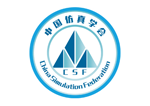Journal of System Simulation
Abstract
Abstract: As the transportation develops rapidly, the traffic burden increases in downtown areas, especially in the areas of convention center, government building, and business & financial center, which exacerbates traffic congestion nearby. Conventional traffic control measures taken include stagger shifts, congestion charging, and tail number limit. Interests of multi aspects are involved in these measures, which has broad effect. The traffic managers now begin to ameliorate traffic burden by technical methods. A feedback-gate control based regional traffic volume control method was proposed and a microscopic simulation was adopted. This reasearch aims to ameliorate traffic pressure and balance traffic flow through traffic managing. The traffic flow control near the convention center area of Nanning was used as a case study for the experiment. The result demonstrates that the regional traffic efficiency increases though the traffic amount decreases, because the average velocity of vehicles increases, while the average passing time decreases.
Recommended Citation
Du, Yiman; Su, Hongfan; Wu, Jianping; Yu, Chen; Lin, Huang; and Liu, Longfei
(2019)
"Traffic Dynamic Regulation and Control Technology in the Central Area of Nanning City,"
Journal of System Simulation: Vol. 31:
Iss.
2, Article 19.
DOI: 10.16182/j.issn1004731x.joss.17WJP-010
Available at:
https://dc-china-simulation.researchcommons.org/journal/vol31/iss2/19
First Page
324
Revised Date
2016-12-29
DOI Link
https://doi.org/10.16182/j.issn1004731x.joss.17WJP-010
Last Page
331
CLC
TP391.9
Recommended Citation
Du Yiman, Su Hongfan, Wu Jianping, Chen Yu, Huang Lin, Liu Longfei. Traffic Dynamic Regulation and Control Technology in the Central Area of Nanning City[J]. Journal of System Simulation, 2019, 31(2): 324-331.
DOI
10.16182/j.issn1004731x.joss.17WJP-010
Included in
Artificial Intelligence and Robotics Commons, Computer Engineering Commons, Numerical Analysis and Scientific Computing Commons, Operations Research, Systems Engineering and Industrial Engineering Commons, Systems Science Commons

